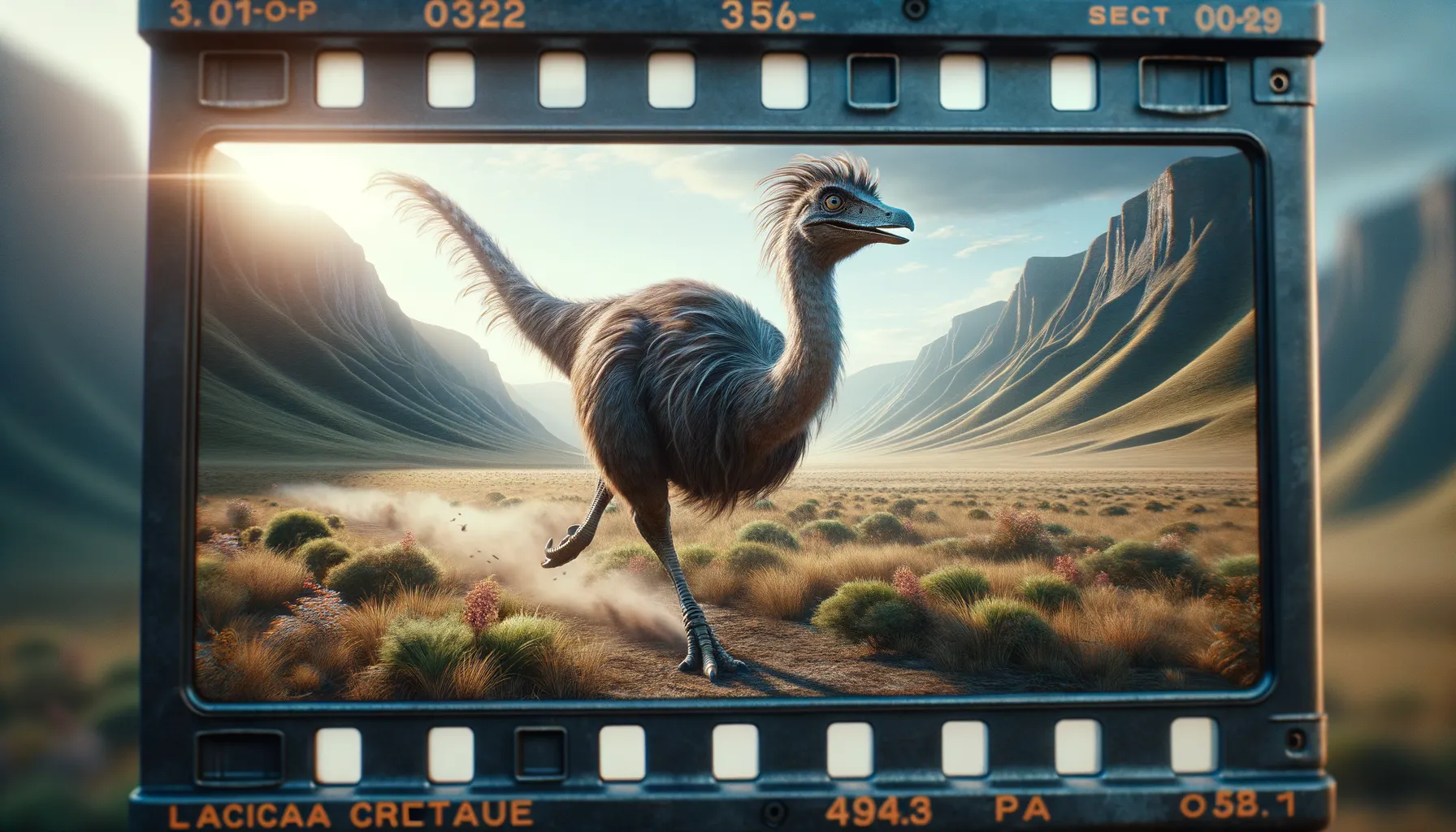
Orcomimus
Swift like the wind, agile in the chase.
Period
Cretaceous
Length
Measured about 8 to 10 meters long.
Height
Stood around 2.5 meters tall at the hips.
Weight
Weighed approximately 500 to 700 kilograms.
Orcomimus was a dinosaur believed to inhabit areas of what is now Mongolia during the Late Cretaceous period. Known for its speed and agility, this dinosaur bears similarities to modern-day ostriches in structure but was much larger. Its diet was likely omnivorous, consuming both plants and small animals. Orcomimus lived in environments that offered both open space for running and foliage for shelter.
Diet
Orcomimus had an omnivorous diet, feeding on a mix of plants and small animals. It likely utilized its speed to catch smaller prey while foraging for vegetation.
Hunting
Its hunting behavior was opportunistic, relying on its quick movements to catch prey. It might have hunted in groups to corner or surround victims, taking advantage of its numbers and speed.
Environmental challenges
Orcomimus faced numerous environmental challenges like shifting climates and competition for resources. The Late Cretaceous was a dynamic time of change, with fluctuating temperatures impacting available food sources. Additionally, they had to contend with predators and larger herbivores competing for similar habitat space, requiring adaptability and survival strategies.
Speed
Orcomimus was a swift runner, capable of reaching significant speeds.
Lifespan
Lived for around 20 to 30 years in the wild.
First discovery
First discovered in the early 21st century during an excavation in Mongolia.
Fun Facts
- Orcomimus was a dinosaur that lived during the Late Cretaceous period, around 70 million years ago.
- The name 'Orcomimus' means 'Orca mimic', referencing its supposed resemblance to modern-day killer whales.
- Unlike many dinosaurs, Orcomimus was thought to be a good swimmer, using its long limbs to paddle through water.
- Orcomimus was a smaller dinosaur, estimated to be about the size of a human, standing roughly 6 feet tall.
- Fossils of Orcomimus have primarily been found in what is now North America, suggesting it lived in coastal regions.
- Orcomimus was likely an omnivore, feeding on small fish, marine organisms, and possibly plants found near the coastline.
- Despite its Orca-like name, Orcomimus was not related to marine reptiles but was part of the theropod dinosaur group.
Growth and Development
Orcomimus grew rapidly during its early years, which was crucial for survival. Dinosaur hatchlings were vulnerable to predation and needed to quickly reach a size where they could fend off smaller threats. Developmental stages included changes in size and shape, optimizing them for speed and agility. These transformations were essential for thriving in their competitive environments.
Habitat
Their habitats were diverse, ranging from open plains to forested areas. Access to water and varied food sources were key factors in their habitat choice. These dinosaurs adapted to regions that provided a balance of cover for protection and clear paths for running.
Interaction with other species
Orcomimus shared its environment with various other dinosaurs and fauna of the Cretaceous period. Its interactions included competition for food and possibly cooperative behaviors among other members of its species. It may have needed to coexist with predatory dinosaurs, necessitating alertness and strategies to avoid becoming prey.
Natural lifespan
In the wild, it could live up to 30 years.
Reproduction
Reproduction was probably seasonal, with the laying of eggs in nests. Maternal care might have been present, with females guarding or nurturing the young after hatching. Hatchlings grew rapidly, reducing vulnerability to predators.
Social behaviour
Orcomimus might have lived in groups, evident from trackways suggesting herding behavior. This social structure could have provided protection against predators and increased success during hunting or foraging. Communication through vocalizations or physical displays was likely used to maintain group cohesion.
Fossil locations
Fossils of Orcomimus have been predominantly found in Mongolia. These locations provide crucial insights into the dinosaur's lifestyle and the environment it inhabited. The concentrations of fossils suggest a region where the species thrived in significant numbers.
